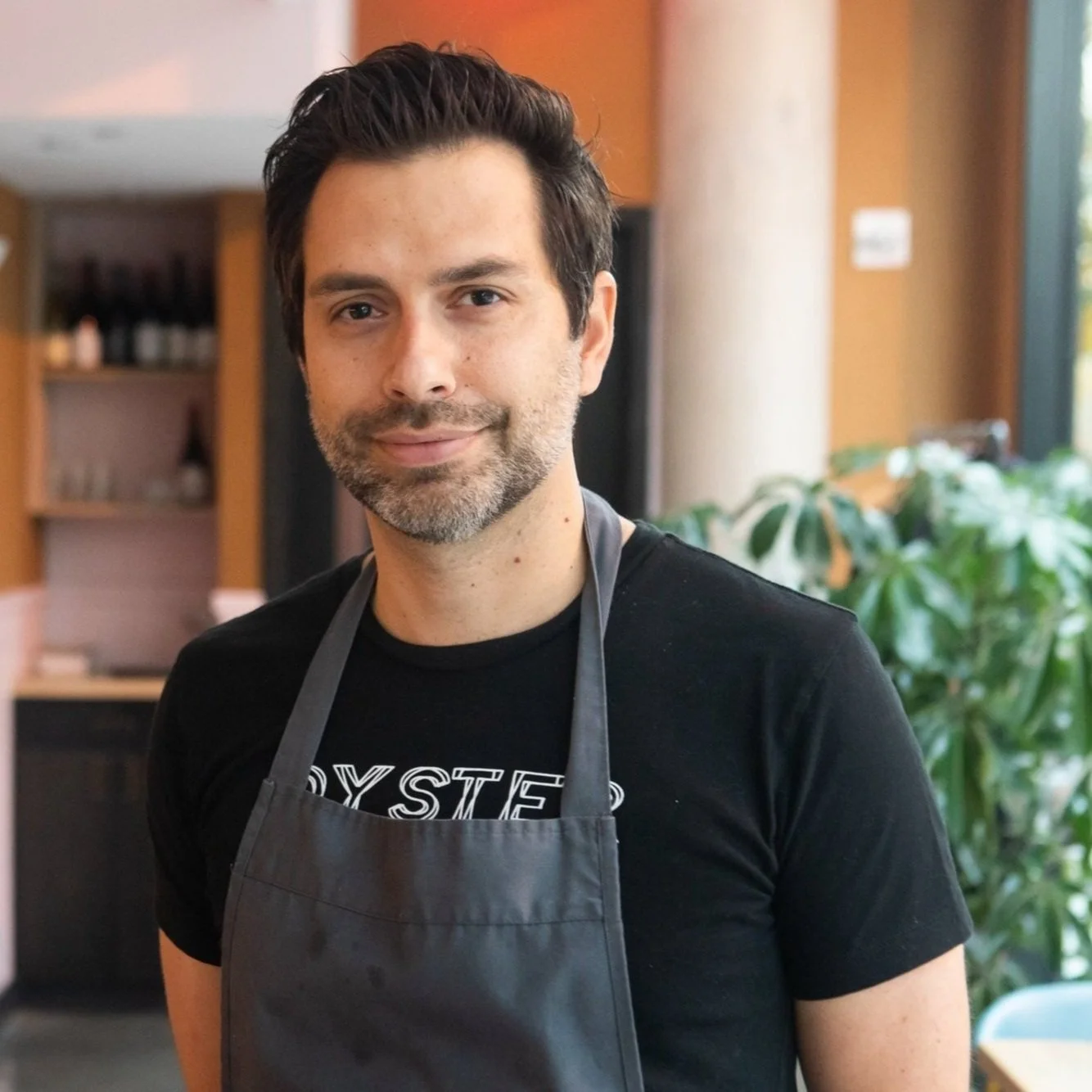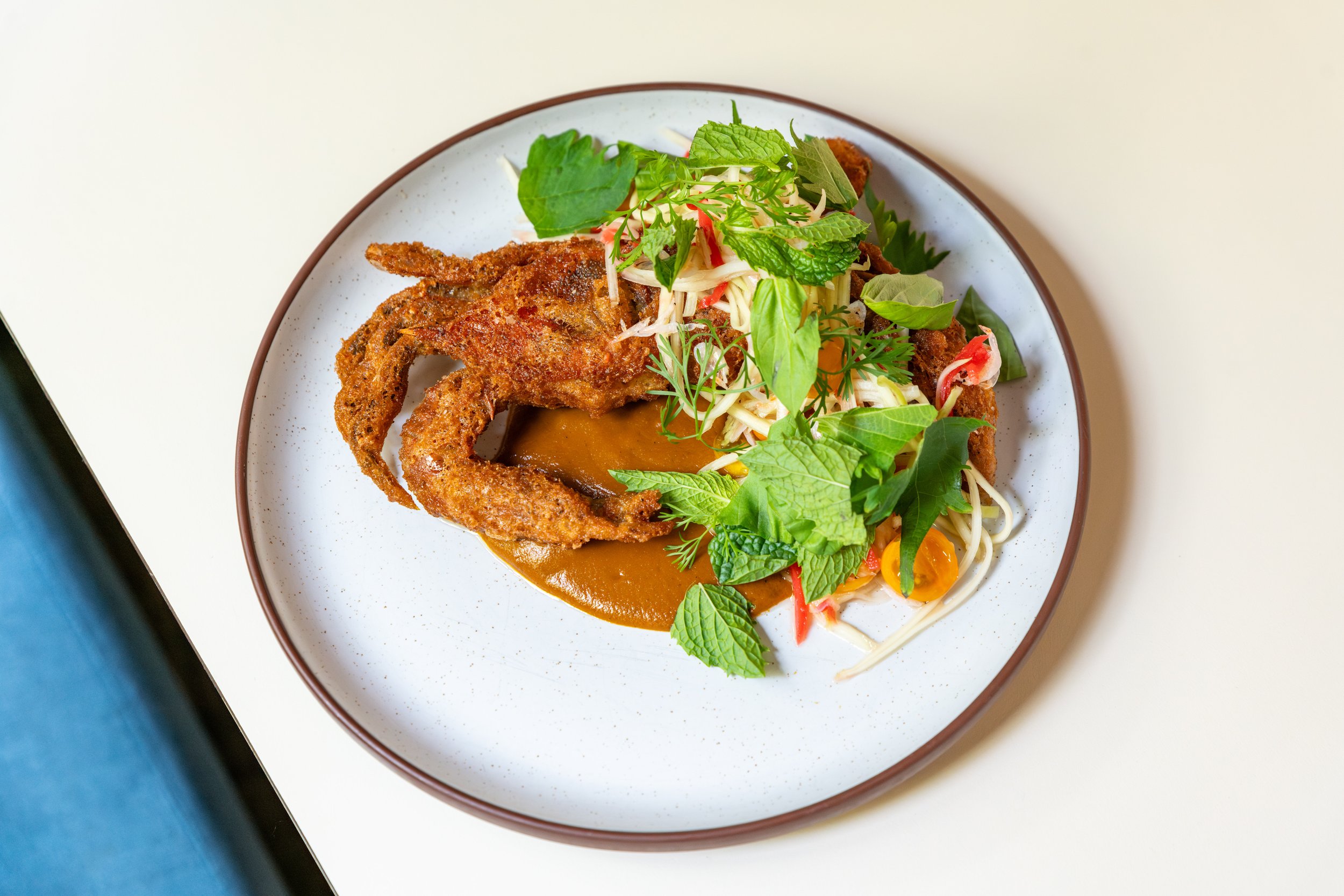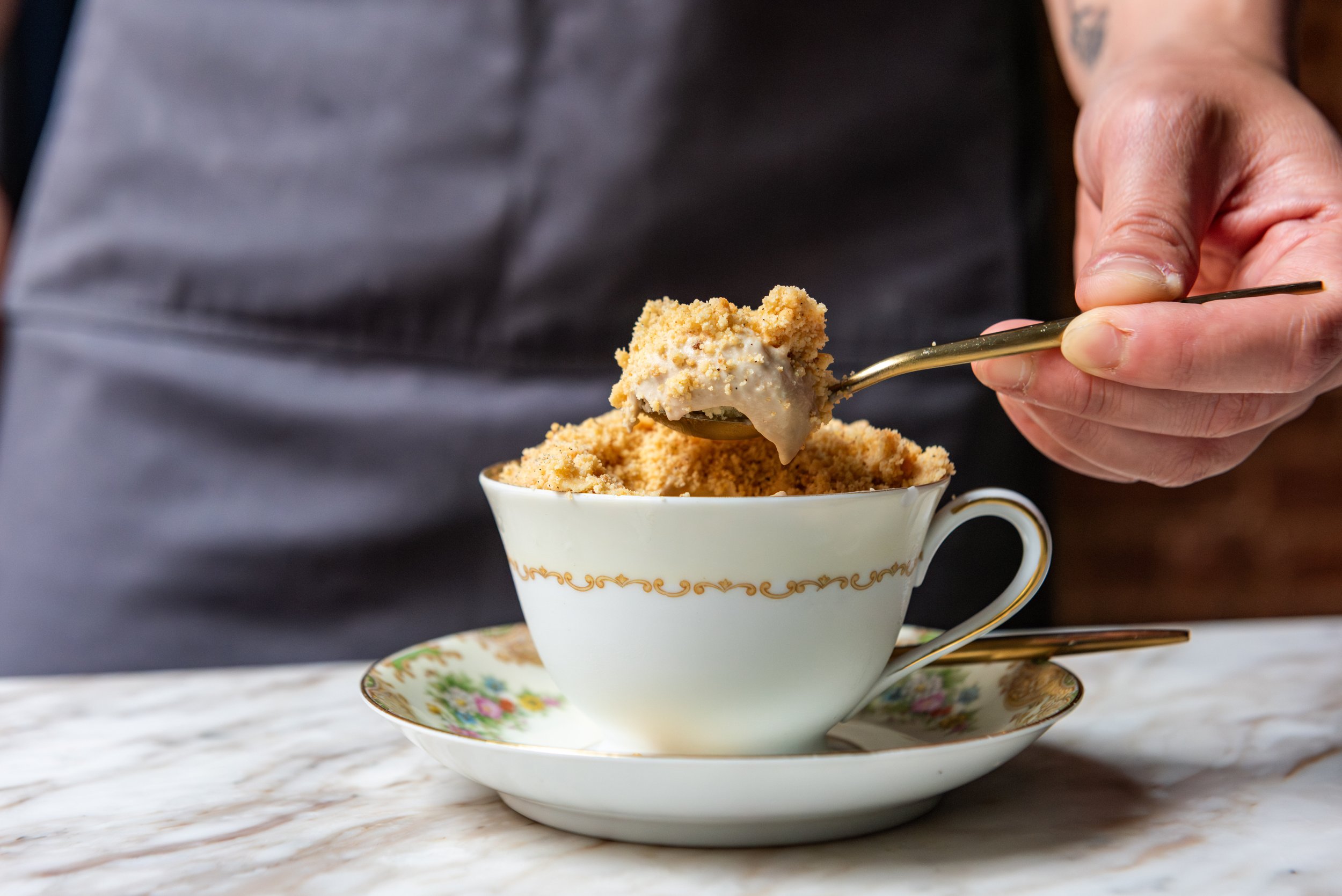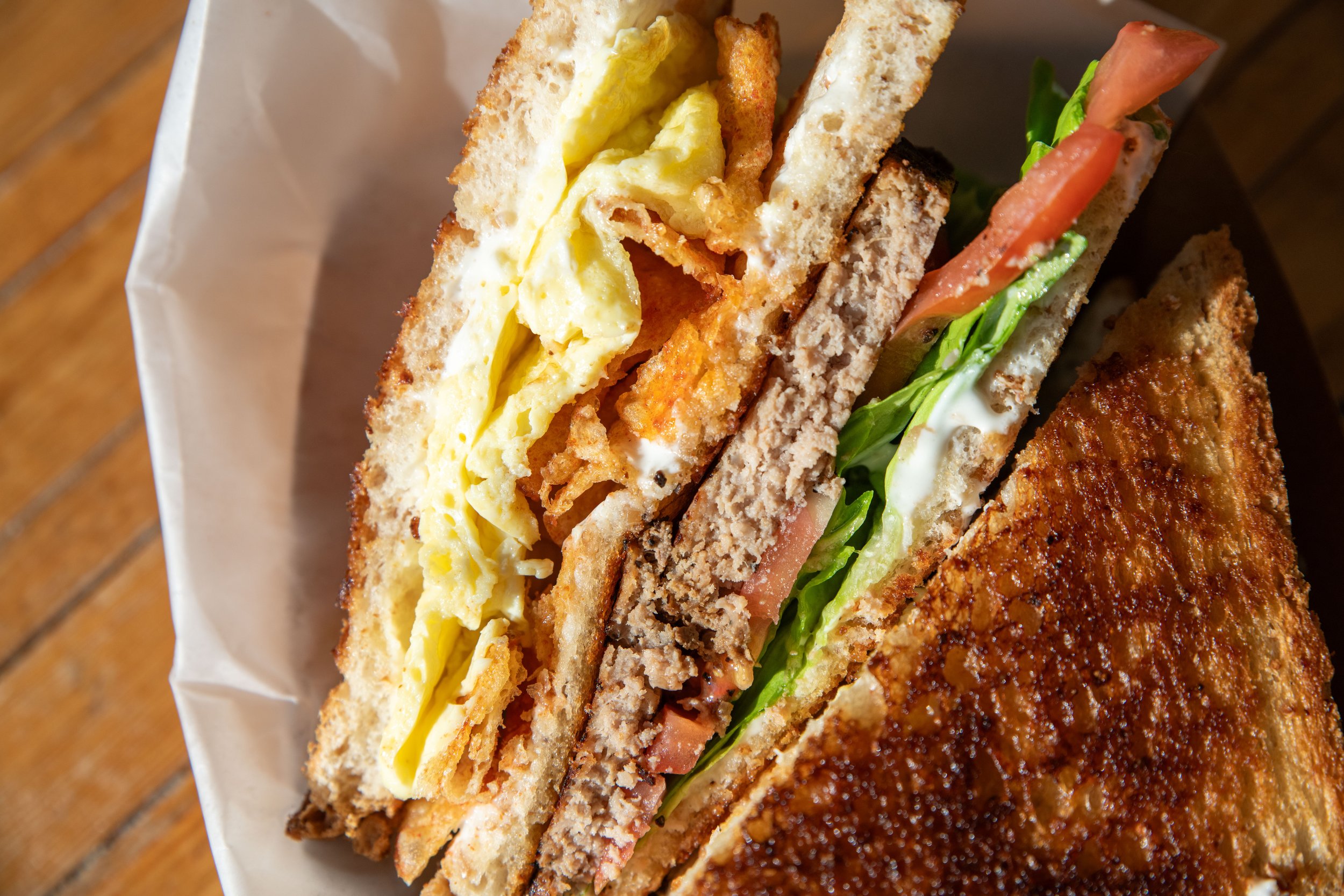Acid Tongue
When citrus is sparse, chefs and bartenders turn to alternative acids through local fruit, fermentation, and organic compounds.
illustration: Bashel lubarsky
For many chefs who embrace the eat-local ethos but don’t live anywhere near Florida’s orange groves or California’s lemon trees, citrus fruits are simply off the table. This quest for alternative forms of acid has led chefs to be more creative than ever—especially since dialing down the acidity isn’t an option.
Chef Daniel Gleason of Sumac
“I find that most of the time if something is missing, it’s just that brightness,” says Daniel Gleason, chef-owner of Sumac in Sperryville, Virginia. “And honestly, the definitive quality to good restaurant food is that elevated seasoning, and I think a lot of it comes from acid.”
Gleason decided to forgo citrus altogether when he began cooking artisanal, local dishes over fire. Even the name of his restaurant is a nod to his policy of sourcing everything except spices and cooking fats from within 150 miles. “We do a lot of foraging, too, and it was the first thing that I foraged as a young kid,” Gleason says of sumac berries. “So, it’s kind of a name that means a bunch of things for us. It’s a nod to our wild sourcing and local policy as well as using the sumac as a citric acid.”
Gleason has learned much about fermentation from Sumac’s neighbor, Pen Druid Fermentation, a spontaneous brewery that barrel ferments its beverages “They are fermentation nerds that we’ve been able to call upon a good amount and sort of use their knowledge to our advantage,” says Gleason, who makes all his own vinegars for Sumac. “Our fermentation program is basically what we lean on in lieu of lemons.”
This winter, those ferments showed up in a beet carpaccio brightened with a house-made Pen Druid pear cider vinegar, wild umeboshi paste, and ginger vinaigrette; as well as a rabbit with a lacto-fermented black walnut sauce; and pork with wild blackberries and the same pear vinegar used in the carpaccio.
Chef Rob Rubba of Oyster Oyster
Chef Rob Rubba of plant-forward Oyster Oyster in Washington, D.C., also decided against using citrus. “People have been cooking for far longer than we’ve been sending citrus around the world, so I think there’s other ways of doing it, and it hasn’t been that difficult for us,” he says.
Rubba is the understated Willy Wonka of acidity. He brines, he pickles, he ferments, and he loves to incorporate tart, locally-grown herbs. There are salt-cured coriander capers that go into lightly acidulated brine before providing bright pops of flavor on winter dishes, and there’s a heaping amount of dehydrated fermented cabbage powder in the spice mixes. “I think any fermented vegetable is really fun because it’s done the work itself,” says Rubba. “I don’t need to dress it like a salad or anything. It’s salty, it’s acidic, and the only thing it really needs is time.”
He also relies heavily on Pennsylvania-based Keepwell Vinegar, sometimes infusing their base vinegars with herbs or fruit. A tarragon-steeped rice vinegar, for instance, showed up in a celery root, kohlrabi, tofu, and hen-of-the-woods mushroom dish last December.
Chef Andrew Partridge of The Shack
After spending his formative cooking years at hyper-local Woodberry Kitchen in Baltimore, citrus was never really on the table for Andrew Partridge, chef de cuisine of The Shack in Staunton, Virginia.
“Citrus isn’t the first thing I look for when I’m needing acid in a dish,” he says. First and foremost, he turns to vinegar—Partridge also sings the praises of Keepwell, which he loads into spray bottles to mist dishes with on their way out of the kitchen. If vinegar isn’t a good fit, he reaches for local fruits that are full of natural acidity, like apples, cherries, raspberries, and blueberries.
Partridge says his philosophy at The Shack is less about avoiding citrus and more about only using it when he wants the distinct citrus flavor that only a citrus can bring, like when he marinates smoky grilled turnips for a miso bagna cauda. “I wanted not just acidity, but the flavor from a lemon.”
Bartender Andon Whitehorn of Alewife
At Alewife in Richmond, the emphasis is more on cutting down on citrus than cutting it out. Like Partridge, Rising Star Bartender Andon Whitehorn believes in reserving the use of citrus for things where it makes sense, like, what would a daiquiri be without lime? When the priority is finding a source for brightness, he uses a 6 percent neutral acid, particularly useful for drinks with delicate flavors that could be overpowered by citrus. The acid is incorporated into the bar’s house-made tonics and cordials, and in cocktails like the False Starboard, a blend of rums, Earl Gray, Strega, and a sour five-spice tea that’s steeped with the neutral acid (full recipe here).
While he uses citrus, he appreciates that cutting down on them makes his bar more eco-friendly. Plus, it’s a major time-saver—a batch of his neutral acid takes about 30 seconds while juicing a batch of citrus takes more like 15 minutes.
“The dogma of [always] having fresh citrus is absurd, to be honest, especially if you’re not going through it every day,” Whitehorn says. “Then you can either give it to the kitchen, or you can maybe try to turn it into a cordial. But if you can nip that in the bud immediately by just juicing less, I think you’re better off for it.”











